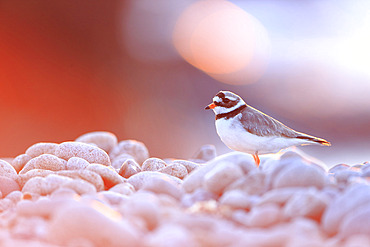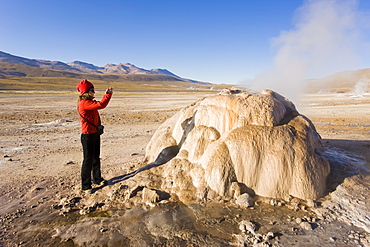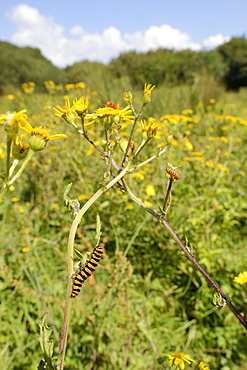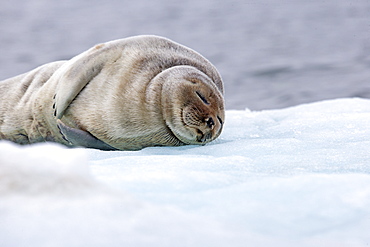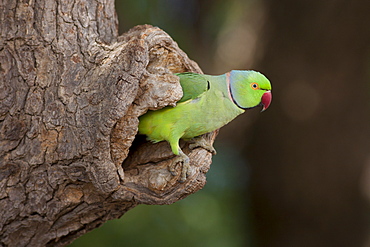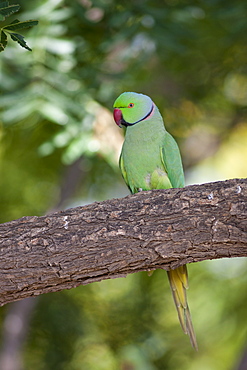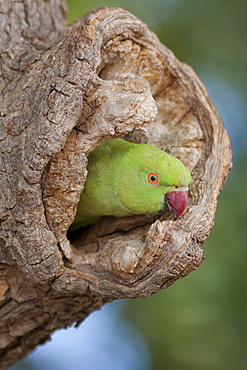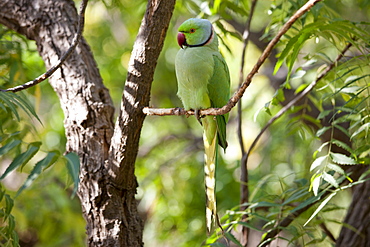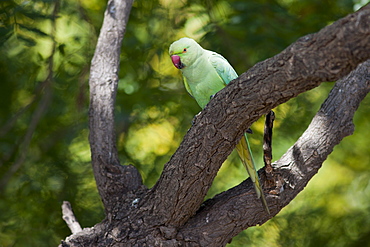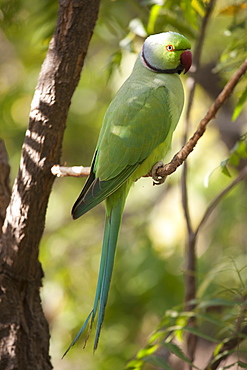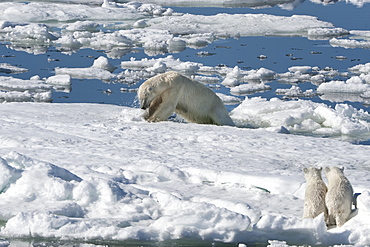Recent searches
Loading...
1231-54 - A wild rose-ringed parakeet (Psittacula krameri) takes flight in London. UK
759-11401 - Pair of Blue-ringed Angelfish, Pomacanthus annularis, Triton Bay, West Papua, Indonesia
860-291632 - Common Ringed Plover (Charadrius hiaticula) in breeding season on a pebble beach in the Cotentin, Manche, Normandy, France
860-290921 - Common Ringed Plover (Charadrius hiaticula) pre-nuptial wintering male digging out an arenicolous worm on the foreshore at low tide, Finistere, Brittany, France
1240-412 - Ringed Plover, County Clare, Munster, Republic of Ireland, Europe
1112-6614 - Adult female ringed kingfisher (Megaceryle torquata), Rio Tres Irmao, Mata Grosso, Pantanal, Brazil, South America
1112-6615 - Adult female ringed kingfisher (Megaceryle torquata), Rio Tres Irmao, Mata Grosso, Pantanal, Brazil, South America
1112-6616 - Adult female ringed kingfisher (Megaceryle torquata), in flight on Rio Cuiaba, Mata Grosso, Pantanal, Brazil, South America
1113-106659 - Pilsumer lighthouse, Krummhörn, East Friesland, Lower Saxony
1350-3524 - Blue ring octopus displaying rings, Hapalochlaena sp., Lembeh Strait, Manado, North Sulawesi, Indonesia, Pacific Ocean
832-391866 - Little ringed plover (Charadrius dubius), Emsland, Lower Saxony, Germany, Europe
832-390638 - Rose-ringed parakeet (Psittacula krameri), Fuerteventura, Canary Islands, Spain, Europe
741-5858 - Ringed Kingfisher (Megaceryle torquata), Pantanal, Mato Grosso, Brazil, South America
832-388255 - Little Ringed Plover (Charadrius-dubius), jumper, young bird in the gravel bed, Bavaria, Germany, Europe
832-387895 - Little ringed plover (Charadrius dubius) stands in shallow water, Rhineland-Palatinate, Germany, Europe
832-387922 - Brooding Little ringed plover (Charadrius dubius) on gravel bank, Bavaria, Germany, Europe
832-387923 - Breeding bird pair, Little ringed plover (Charadrius dubius) on gravel bank, Bavaria, Germany, Europe
832-384629 - Rose-ringed parakeet (Psittacula krameri), female looking out of nest cave in a Plane tree (Platanus), palace gardens Biebrich, Hesse, Germany, Europe
832-384630 - Rose-ringed parakeet (Psittacula krameri) sits on a branch, palace gardens Biebrich, Hesse, Germany, Europe
832-384628 - Rose-ringed parakeet (Psittacula krameri), female looking into nest cave in a Plane tree (Platanus), palace gardens Biebrich, Hesse, Germany, Europe
832-384627 - Rose-ringed parakeets (Psittacula krameri), animal pair sits on branch and beaks, kiss, palace gardens Biebrich, Hesse, Germany, Europe
794-520 - El Tatio Geysers, 4300m above sea level, El Tatio is the world's highest geyser field, the area is ringed by volcanoes and fed by 64 geysers, Atacama Desert, Norte Grande, Chile, South America
1112-4851 - An adult rose-ringed parakeet (Psittacula krameri) perched on a tree in Wilpattu National Park, Sri Lank, Asia
860-287823 - Blue ringed tree frog (Boophis picturatus), Andasibe, Périnet, Région Alaotra-Mangoro, Madagascar
971-174 - Female northern giant petrel (Macronectes halli), ringed on South Georgia and photographed years later off Bristol Island, South Sandwich Islands, Polar Regions
1245-1098 - Ringed Kingfisher (Megaceryle torquata) by the Gutierrez Lake, Nahuel Huapi National Park, Rio Negro Province, Argentina, South America
1167-1473 - Old Town, ringed by defensive City Walls and Forts, from the sea, Dubrovnik, UNESCO World Heritage Site, Dalmatia, Croatia, Europe
1131-760 - Ringed kingfisher (Ceryle torquata), Pantanal, Mato Grosso, Brazil, South America
1131-759 - Ringed kingfisher (Ceryle torquata) in flight, Pantanal, Mato Grosso, Brazil, South America
989-380 - Cinnabar moth caterpillars (Tyria jacobaeae) feeding on Ragwort plants (Senecio jacobaea), Corfe Common, Dorset, England, United Kingdom, Europe
860-284307 - Little-ringed plover on bank- Midlands UK
860-285741 - Ringed seal at rest on ice, Barter Island Alaska USA
860-285739 - Ringed seal at rest on ice, Barter Island Alaska USA
860-284308 - Little-ringed plovers on bank- Midlands UK
911-10491 - On Friday 11th July 2014, the Young Ospreys that nest on Bassenthwaite in the Lake District National Park, Cumbria, UK, are ringed and fitted with a satelite tracker. they are ringed by Pete Davis, a licensed bird ringer, and the satelite tracker is fitred by Roy Dennis. Roy is theonly person in the UK, licensed to fit satelite trackers to birds of prey. The tracing is part of the Bassenthwaite Osprey project, to see whereabouts in Africa the young migrate to, before returning hopefully to the UK to nest.Ospreys recolonized the Lake district in 2001, after an absence ovf over 150 years. In the last fourteen years of breeding over half a million people have visited the project to view these spectacular fish eating birds.
911-10492 - On Friday 11th July 2014, the Young Ospreys that nest on Bassenthwaite in the Lake District National Park, Cumbria, UK, are ringed and fitted with a satelite tracker. they are ringed by Pete Davis, a licensed bird ringer, and the satelite tracker is fitred by Roy Dennis. Roy is theonly person in the UK, licensed to fit satelite trackers to birds of prey. The tracing is part of the Bassenthwaite Osprey project, to see whereabouts in Africa the young migrate to, before returning hopefully to the UK to nest.Ospreys recolonized the Lake district in 2001, after an absence ovf over 150 years. In the last fourteen years of breeding over half a million people have visited the project to view these spectacular fish eating birds.
911-10490 - On Friday 11th July 2014, the Young Ospreys that nest on Bassenthwaite in the Lake District National Park, Cumbria, UK, are ringed and fitted with a satelite tracker. they are ringed by Pete Davis, a licensed bird ringer, and the satelite tracker is fitred by Roy Dennis. Roy is theonly person in the UK, licensed to fit satelite trackers to birds of prey. The tracing is part of the Bassenthwaite Osprey project, to see whereabouts in Africa the young migrate to, before returning hopefully to the UK to nest.Ospreys recolonized the Lake district in 2001, after an absence ovf over 150 years. In the last fourteen years of breeding over half a million people have visited the project to view these spectacular fish eating birds.
911-10493 - On Friday 11th July 2014, the Young Ospreys that nest on Bassenthwaite in the Lake District National Park, Cumbria, UK, are ringed and fitted with a satelite tracker. they are ringed by Pete Davis, a licensed bird ringer, and the satelite tracker is fitred by Roy Dennis. Roy is theonly person in the UK, licensed to fit satelite trackers to birds of prey. The tracing is part of the Bassenthwaite Osprey project, to see whereabouts in Africa the young migrate to, before returning hopefully to the UK to nest.Ospreys recolonized the Lake district in 2001, after an absence ovf over 150 years. In the last fourteen years of breeding over half a million people have visited the project to view these spectacular fish eating birds.
911-10382 - An Arctic Tern, Sterna paradisaea, that has been ringed, on Inner Farne, on the Farnes Islands, off Seahouses in Northumberland, UK.
1176-141 - Ringed kingfisher (Megaceryle torquata), Mato Grosso do Sul, Brazil, South America
816-7998 - Ringed seal (Pusa hispida) lying on an ice floe, Arctic shelf, Svalbard, Arctic
832-369346 - Female Polar bear (Ursus maritimus) dragging a Ringed seal (Pusa hispida or phoca hispida) and accompanied by one cub, Svalbard Archipelago, Barents Sea, Norway
832-247499 - Closed ringed notebook, notebook on a wooden desk
832-247500 - Closed ringed notebook, notebook on a wooden desk
1161-5010 - Indian Rose-Ringed Parakeet, Psittacula krameri, in tree hole in village of Nimaj, Rajasthan, Northern India
1161-5008 - Indian Rose-Ringed Parakeet, Psittacula krameri, on tree branch in village of Nimaj, Rajasthan, Northern India
1161-5011 - Indian Rose-Ringed Parakeet, Psittacula krameri, in tree hole in village of Nimaj, Rajasthan, Northern India
1161-5032 - Indian Rose-Ringed Parakeet, Psittacula krameri, on tree branch in village of Nimaj, Rajasthan, Northern India
1161-5009 - Indian Rose-Ringed Parakeet, Psittacula krameri, on tree branch in village of Nimaj, Rajasthan, Northern India
1161-5030 - Indian Rose-Ringed Parakeet, Psittacula krameri, on tree branch in village of Nimaj, Rajasthan, Northern India
1161-5033 - Indian Rose-Ringed Parakeet, Psittacula krameri, on tree branch in village of Nimaj, Rajasthan, Northern India
1112-1209 - A ringed seal (Pusa hispida) near its breathing hole in Storfjorden, Svalbard, Norway, Scandinavia, Europe
869-2687 - Ringed Kingfisher sitting on branch South America
869-4062 - ringed snake or grass snake snake swimming in pond
869-533 - ringed snake or grass snake ringed snake European water snake grass snake lying on moss
869-345 - ringed snake or grass snake ringed snake water lily
869-4061 - ringed snake or grass snake snake swimming in pond
1131-20 - Female polar bear (Ursus maritimus) hunting a ringed seal (Pusa hispida) (phoca hispida) accompanied by two cubs, Svalbard Archipelago, Barents Sea, Norway, Scandinavia, Europe
918-70 - Ringed seal (Pusa hispida), Svalbard, Norway, Scandinavia, Europe
918-68 - Common ringed plover (ringed plover) (Charadrius hiaticula), Svalbard, Norway, Scandinavia, Europe
918-69 - Ringed seal (Pusa hispida), Svalbard, Norway, Scandinavia, Europe
1116-32028 - Australia, Venomous Blue Ringed octopus (Hapalochlaena maculosa) attached to sea sponge.
857-8381 - Ringed Kingfisher perches on a thorny branch on the llanos of central Venezuela, South America.
1198-684 - Little Ringed Plover (Charadrius dubius) standing in pool of water drinking, Bulgaria
1103-63 - Ringed pipefish (Dunckerocampus dactyliophorus), grows to 18cm, Indo-Pacific waters, Philippines, Southeast Asia, Asia
1103-62 - Ringed pipefish (Dunckerocampus dactyliophorus), grows to 18cm, Indo-Pacific waters, Philippines, Southeast Asia, Asia
1003-118 - Ringed plover (Charadrius hiaticula) on nest. Farne Islands, Northumbelrand, UK
1003-116 - Ringed plovers (Charadrius hiaticula), Scotland, United Kingdom, Europe
995-143 - Ringed Plover (Charadrius hiaticula) flying over water and sandy beach. Gott bay. Argyll,. Scotland, UK
995-137 - Ringed Plover (Charadrius hiaticula) running along shallow water on beach in search of grubs in the sand and shallows. Gott bay, Argyll, Scotland, UK
995-135 - Ringed Plover (Charadrius hiaticula) flying over water and sandy beach. Gott bay, Argyll, Scotland, UK (rr)
995-146 - Ringed Plover (Charadrius hiaticula) running along beach in search of grubs in the sand. Gott bay, Argyll, Scotland, UK
995-136 - Ringed Plover (Charadrius hiaticula) pausing briefly in shallow water on a sandy beach while foraging for grubs in the sand. Gott bay, Argyll, Scotland, UK
995-144 - Ringed Plover (Charadrius hiaticula) with a beak full of food and sand after pulling a grub out of a sandy beach. Gott ba, Argyll, Scotland, UK
995-145 - Ringed Plover (Charadrius hiaticula) running along beach in search of grubs in the sand. Gott bay, Argyll, Scotland, UK
995-141 - Ringed Plover (Charadrius hiaticula) taking off from a sandy beach wings outstretched. Gott bay, Argyll, Scotland, UK
995-140 - Ringed Plover (Charadrius hiaticula) with a beak full of food and sand after pulling a grub out of a sandy beach. Gott bay, Argyll,, Scotland, UK
995-138 - Ringed Plover (Charadrius hiaticula) running along shallow water on beach in search of grubs in the sand and shallows. Gott bay, Argyll, Scotland, UK
995-139 - Ringed Plover (Charadrius hiaticula) running along beach in search of grubs in the sand. Gott bay, Argyll, Scotland, UK
979-2707 - Adult ringed plover (Charadrius hiaticula) faking a broken wing in order to divert attention away from it's nest on the ground. Lovund, Norway in the Norwegian Sea.
979-7139 - Chinstrap penguin (Pygoscelis antarctica) chick head detail at colony on Useful Island near the Antarctic Peninsula. There are an estimated 2 million breeding pairs of chinstrap penguins in the Antarctic peninsula region alone, perhaps as many as 7.5 million breeding pairs in all of Antarctica. Their name derives from the narrow black band under their heads which makes it appear as if they are wearing black helmets, making them one of the most easily identified types of penguin. Other names for them are "Ringed Penguins", "Bearded Penguins", and "Stonecracker Penguins" due to their harsh call. They grow to 68 cm (27 in). The average adult weight of a Chinstrap Penguin is 4.5 kg (10 lbs). Weight can range from 3 to 6 kg (6.6-13.2 lbs), with males being slightly larger and weight varying based on where the penguin is in the breeding cycle. Their diet consists of krill, shrimp, and fish. On land they build circular nests from stones, and lay two eggs, which are incubated by both the male and the female for shifts of five to ten days. They can also breed on icebergs, though they prefer non-icy conditions. The chicks hatch after about 35 days, and have fluffy gray backs and white fronts. The chicks stay in the nest for 20?30 days before they go to join a creche. At around 50?60 days old, they moult, gaining their adult plumage and go to sea. The Chinstrap Penguin was first described by German naturalist Forster in 1781. Its specific epithet was often seen as antarctica, however a 2002 review determined the genus Pygoscelis was masculine, and hence the correct binomial name is Pygoscelis antarcticus.
979-8566 - Adult polar bear (Ursus maritimus) with a frshly killed ringed seal on multi-year ice floes in the Storfjord Region of the Svalbard Archipelago, Norway
979-8653 - Adult polar bear (Ursus maritimus) with a frshly killed ringed seal on multi-year ice floes in the Storfjord Region of the Svalbard Archipelago, Norway
979-2008 - Adult ringed plover (Charadrius hiaticula) faking a broken wing in order to divert attention away from it's nest on the ground. Lovund, Norway in the Norwegian Sea.
979-2009 - Adult ringed plover (Charadrius hiaticula) faking a broken wing in order to divert attention away from it's nest on the ground. Lovund, Norway in the Norwegian Sea.
920-2632 - Blue-ringed angelfish (Pomacanthus annularis), Similan Islands, Thailand, Andaman Sea, Southeast Asia, Asia
911-7583 - The feet of a Whistling duck at Martin Mere bird reserve near Ormskirk, Lancashire, England, United Kingdom, Europe
743-888 - Peregrine chicks (Falco peregrinus), after being ringed, Northumberland National Park, England, United Kingdom, Europe
832-3956 - Rose-ringed parakeet (Psittacula krameri) coming out of a nest hole in Ranthambore National Park, Rajasthan, India, Asia
832-3908 - Grass Snake, Ringed Snake or Water Snake (Natrix natrix), Kalkalpen National Park, Upper Austria, Austria, Europe
832-14010 - Common Kestrel (Falco tinnunculus), tended back to health, being banded and released back into freedom, Roesrath, North Rhine-Westphalia, Germany, Europe
817-243188 - Ringed seal (Phoca hispida), Arctic and Subarctic
748-1166 - Ringed seal (Phoca hispida) pup, Billefjord, Svalbard, Spitzbergen, Artic, Norway, Scandinavia, Europe
748-1150 - Polar bear with a cub near a ringed seal kill, Svalbard, Spitzbergen, Arctic, Norway, Scandinavia, Europe
748-1115 - Ringed seal (Phoca hispida) pup, Billefjord, Svalbard, Spitzbergen, Arctic, Norway, Scandinavia, Europe
748-1114 - Ringed seal (Phoca hispida) with pup, Billefjord, Svalbard, Spitzbergen, Arctic, Norway, Scandinavia, Europe
748-1112 - Ringed seal (Phoca hispida) pup, Billefjord, Svalbard, Spitzbergen, Arctic, Norway, Scandinavia, Europe


